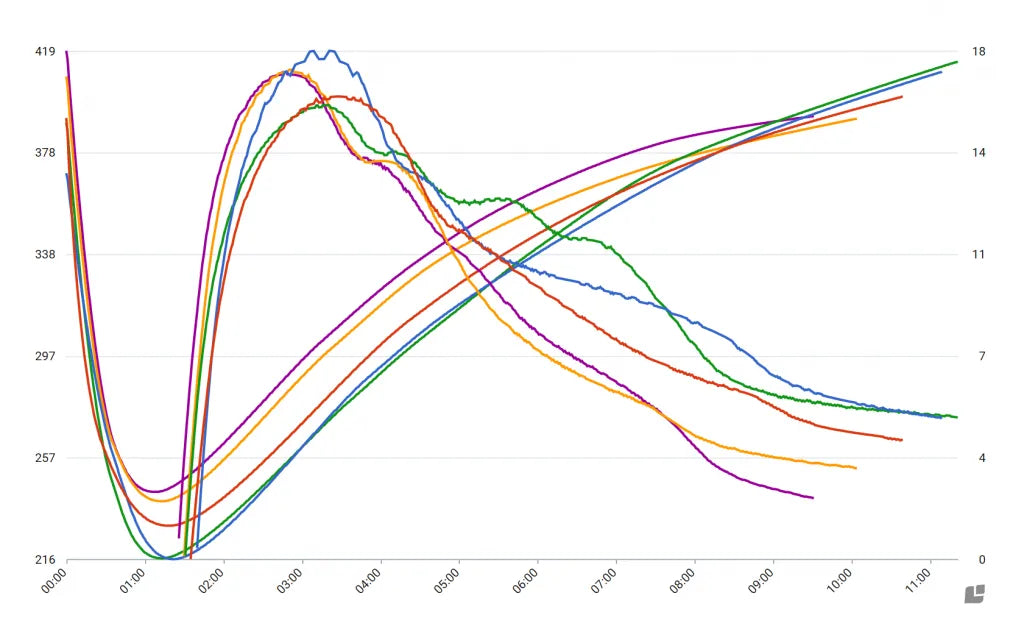
Roasting for Quality
Share
The Maillard Reaction: The Heart of Flavor Development
One of the most crucial stages in coffee roasting is the Maillard reaction. This is a complex chemical reaction between amino acids and reducing sugars that occurs at higher temperatures. Named after the French chemist Louis-Camille Maillard, who first described it in the early 20th century, the Maillard reaction is responsible for the development of the deep, rich flavors that we associate with roasted coffee.
The Maillard Reaction and Time
The Maillard reaction doesn’t happen all at once — it occurs over a period of time. During roasting, the Maillard reaction begins around the time the beans reach a temperature of 285°F. As the temperature rises, the sugars and amino acids in the coffee beans react, producing a variety of flavor compounds. The exact timing of this phase is crucial because it affects the final taste of the coffee.
The Maillard time refers to the length of time this reaction is allowed to unfold. Shortening or lengthening Maillard time can have a significant impact on the flavor profile. If the Maillard phase is cut short, the coffee might lack depth and sweetness, while extending it too long can result in overly dark, bitter flavors. This is why we need pay close attention to how long the Maillard reaction is allowed to occur during the development of our profiles.
Development Time: The Final Stage of Flavor Creation
Following the Maillard reaction is the development phase, which continues the transformation of sugars and acids into a more complex flavor profile. During development time, the coffee begins to lose moisture, and the remaining sugars undergo caramelization. This stage is where the “true” flavors of the coffee begin to emerge, and the development time determines how bright, sweet, or even roasted the final cup will be.
How Development Time Affects Flavor
Development time is typically measured from the first crack, a distinct popping sound that happens around 400°F during roasting, when the beans expand and release moisture. Once the first crack occurs, the beans enter development time, and this is when the flavors begin to balance and mature.
- Short development time: A quick development after the first crack tends to highlight the coffee’s acidity, bright notes, and fresh flavors. This is common in lighter roasts, which preserve the original characteristics of the bean.
- Long development time: Extending development time gives the coffee a chance to deepen its sweetness and balance its acidity, but can also bring out roastier, chocolatey, and caramel flavors. This is characteristic of medium to dark roasts, where the coffee has a fuller body and more developed complexity.
Fine-tuning the development time allows us to control the balance between acidity and sweetness, and to either highlight or minimize certain flavor notes.
The Interplay of Maillard and Development Time
The key to a great roast lies in understanding how the Maillard reaction and development time work together. These two phases are not independent — they build on each other, with the Maillard reaction setting the stage for the more nuanced flavors that will emerge during the development time.
By adjusting Maillard time, we can influence the sweetness and complexity of the cup, while controlling development time allows us to balance the roasted flavors. A well-calibrated roast profile, where these two variables are managed effectively, will yield a coffee that is smooth, well-rounded, and rich in flavor. Understanding and mastering Maillard time and development time can be the difference between a great coffee and a mediocre one.
Our ability to control these stages leads to consistency and precision, ensuring that the coffee we produce consistently delivers the same high-quality flavors time after time.
